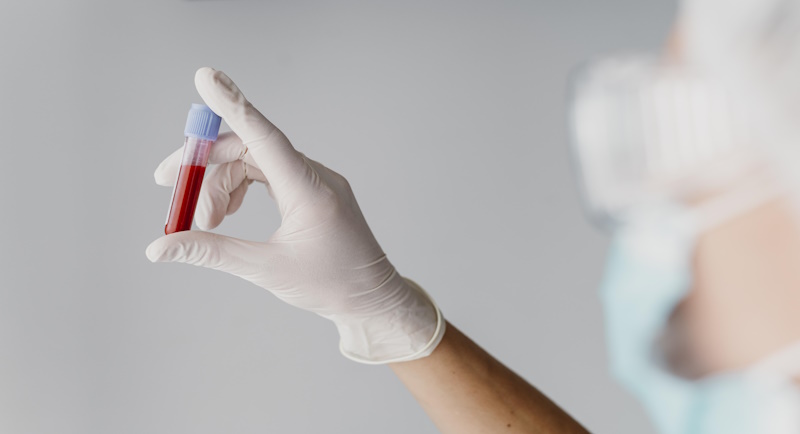What every cancer patient should know about the risk of blood clots
When battling cancer, there are numerous factors to take into account. Fatigue, nausea/vomiting, and pain are just a few of the potential side effects. However, another side effect that people with cancer are susceptible to but is often not discussed is blood clots.
Individuals diagnosed with cancer have a more significant risk of potentially developing a serious blood clot than the general population. This type of blood clot, known as deep vein thrombosis (DVT), is more likely to form in the leg, pelvis, or arms of cancer patients. Although all blood clots can potentially be dangerous, DVT is especially concerning as it can travel through the body and become lodged in the lungs, resulting in a pulmonary embolism (PE). This medical condition, called venous thromboembolism (VTE), can be life-threatening.
Be aware of signs of blood clots
First, know the signs of blood clots. Becoming knowledgeable about blood clots can save a life in the long run.
According to the American Cancer Society, here is what you need to know about possible symptoms or signs of a blood clot and to get help as soon as you can:
- Sudden leg or arm pain
- Swelling in the leg or arm
- Fast heart rate
- Shortness of breath
- A feeling of overwhelming dread or doom
- Sweating or fever
- Coughing up blood
- Redness or discoloration of skin
- Skin that is warm to the touch
- Pain or tenderness that is not from an injury
What factors increase blood clot risk for cancer patients? Let’s take a look at the numerous reasons why:
Depends on the type of cancer
The reason why certain cancers have a greater tendency to cause blood clots is still unknown. However, cancers of the lungs, brain, kidneys, ovaries, pancreas, and lymphoma blood cancers are all linked to a higher risk of blood clots. Although these types of cancers are more likely to cause blood clots, it is vital for anyone diagnosed with cancer to be aware of the causes and potential dangers of blood clots.
Chemotherapy and hormone therapy can increase risk
Cancer patients undergoing chemotherapy often suffer from severe fatigue, rendering them inactive for several weeks or even months. Unfortunately, inactivity is a risk factor for blood clots. Even receiving chemotherapy alone can raise the risk of developing blood clots. This is because chemotherapy releases substances into the bloodstream that promote clotting while simultaneously killing cancer cells. However, it is essential to note that not all chemotherapy drugs carry the same risk, and some are less likely to cause clotting than others.
Patients with cancer who undergo hormone therapy may have a higher risk for blood clots due to multiple factors. The treatment may interfere with estrogen levels in the body, leading to the thickening of blood and the formation of clots. Breast cancer hormone therapy is particularly prone to cause this effect. As a precaution, all cancer patients should engage in a discussion with their oncologist about the possibility of developing blood clots related to their cancer treatment.
Surgery increases blood clot risk
Although surgery can be a vital part of cancer treatment, it also has the potential to negatively impact a patients’ health by increasing the risk of VTE. Older or obese cancer patients seem more likely to develop blood clots than other patients. Surgery puts patients at risk of blood clots due to the extended period of inactivity needed during recovery. Being inactive for a long time increases the likelihood of blood clots forming in anyone. Additionally, surgery can damage blood vessel walls, affecting an individual’s blood flow which can increase blood clot risk.
Reducing risk of blood clots with cancer
If you have cancer, it is possible for you to have a higher risk of getting blood clots. However, there are measures you can take to prevent clotting. You should start by having a detailed conversation with your doctor about taking low-dose anticoagulant (blood-thinning) medications to prevent clots from forming. Wearing compression stockings is another option that cancer patients should consider. These stockings help massage your legs, promoting better blood flow to the legs helping avert blood clots from forming.
Staying active during cancer treatment is crucial, even if you don’t feel your best. You can take short walks throughout the day or do leg exercises while seated and stretching to promote healthy blood flow. Even marching in place for a minute a few times a day can help prevent blood clots.
Dr. David Samadi is the Director of Men’s Health and Urologic Oncology at St. Francis Hospital in Long Island. He’s a renowned and highly successful board certified Urologic Oncologist Expert and Robotic Surgeon in New York City, regarded as one of the leading prostate surgeons in the U.S., with a vast expertise in prostate cancer treatment and Robotic-Assisted Laparoscopic Prostatectomy. Dr. Samadi is a medical contributor to NewsMax TV and is also the author of The Ultimate MANual, Dr. Samadi’s Guide to Men’s Health and Wellness, available online both on Amazon and Barnes & Noble. Visit Dr. Samadi’s websites at robotic oncolo gy and prostate cancer 911.

